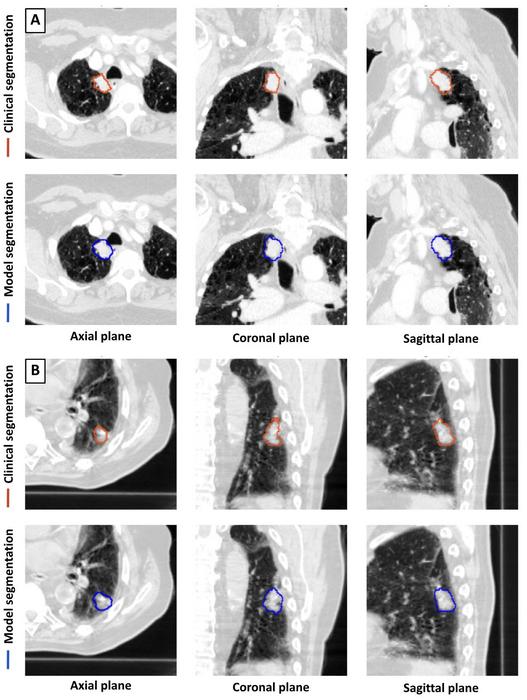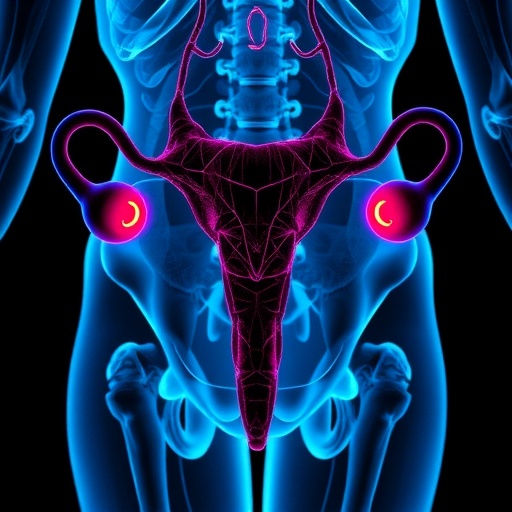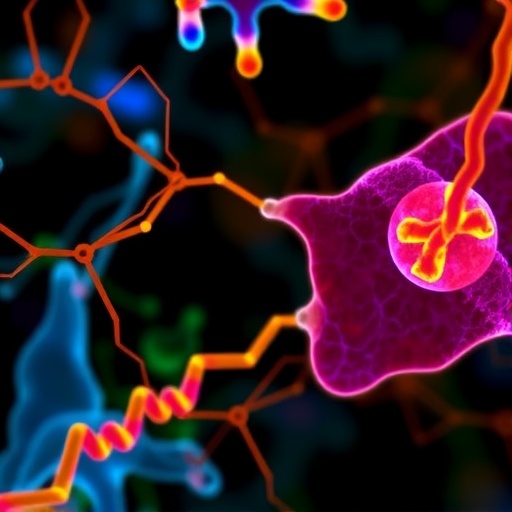A groundbreaking study published in the prestigious journal Radiology has unveiled a new deep learning model that demonstrates significant promise in detecting and segmenting lung tumors from CT scans. This advancement could potentially reshape the landscape of lung cancer diagnosis and treatment, a critical area in oncology given lung cancer’s status as the leading cause of cancer death in the United States. The research, which utilized a unique large-scale dataset, aims to enhance the accuracy and efficiency of tumor identification, offering a solution to the inconsistencies often seen in manual assessments by physicians.
For years, radiologists have been the frontline defense against lung cancer, meticulously analyzing CT scans to pinpoint tumors for treatment deliberation. However, this process is labor-intensive and fraught with variability—different physicians may interpret the same scans differently, leading to discrepancies in diagnosis and treatment planning. The emergence of artificial intelligence, particularly deep learning techniques, presents a transformative opportunity to reduce human error and streamline workflows. The authors of the study highlighted that existing AI applications to date have suffered from limitations such as small sample sizes and an over-reliance on manual adjustments, thus emphasizing the need for models that can operate autonomously across diverse clinical environments.
In their retrospective analysis, the researchers developed a near-expert-level model using a dataset composed of 1,504 pre-radiation treatment CT simulation scans. This corpus included 1,828 delineated lung tumors, establishing a robust foundation for training their 3D U-Net architecture model. The model’s unique three-dimensional approach allows it to utilize interslice information, thus enhancing its capability to detect smaller lesions that might be misidentified by traditional two-dimensional models. This multidimensional processing strength is a significant advantage, potentially leading to improved diagnostic accuracy.
The experimental framework involved dividing the CT scans into a training set, where the model learned to recognize the nuances of tumor characteristics, and a separate test set comprising 150 CT scans. Each model-predicted tumor volume was meticulously compared against physician-delineated volumes, employing an array of performance metrics to gauge efficacy. The results were striking; the model achieved a sensitivity of 92% in detecting lung tumors, paired with an 82% specificity rate. This indicates that the model is not only proficient at identifying true positives but also adept at minimizing false positives, a critical aspect in clinical decision-making.
Segmentation accuracy was further assessed in a subset of these scans, revealing a median Dice similarity coefficient (DSC) of 0.77 when comparing model segmentations against physician evaluations. In contrast, the corresponding physician-physician DSC was recorded at 0.80. This marginal difference highlights the potential of AI systems to reach near-human-level performance while offering significant time savings over manual segmentation efforts performed by medical practitioners. The findings underscore an essential narrative: AI does not aim to replace physicians but rather to augment their capabilities and efficiency.
As the study concludes, Dr. Mehr Kashyap, the lead author and a resident physician at Stanford University School of Medicine, envisions a paradigm shift in lung cancer management driven by this technology. He emphasizes the importance of conducting longitudinal studies to ascertain the model’s potential to evaluate treatment responses over time and its capability to predict clinical outcomes based on tumor burden assessments. Such undertakings could yield data-rich insights that can significantly influence how oncologists approach lung cancer care.
Furthermore, the researchers pointed out the urgent need for future investigations to tackle broader applications—specifically, using this model for comprehensive lung tumor burden estimation. As treatment modalities evolve, understanding how distinct tumor burdens associate with clinical outcomes could provide critical insights that empower oncologists to develop tailored treatment plans. This depth of understanding may not only enhance treatment efficacy but also facilitate ongoing monitoring, allowing for adaptive treatment strategies aligned with the patient’s journey through cancer care.
In the vibrant discourse surrounding AI and healthcare, this study serves as an essential reminder of the balance between technological innovation and human oversight. The intersection of AI capabilities with the sensitivities inherent in medical treatment points toward a future where machine learning can significantly augment diagnostic practices while still requiring the critical interpretations of skilled clinicians. The authors encapsulate this notion, envisioning an integrated system where both AI and human expertise collaborate to provide the best possible patient outcomes.
This research not only marks a significant leap in the utilization of AI in radiology but also sets a foundation for reimagining protocols in cancer diagnostics and treatment decisions. As deep learning continues to evolve, the integration of such advanced models may unfold new frontiers in personalized medicine, where patients receive tailored interventions based on precise tumor identifications and burden assessments. The anticipation buzzes not merely due to the advancement in technology but because of its potential to save lives and transform clinical practice fundamentally.
In summary, the development of this deep learning model signifies an exciting chapter in the ongoing evolution of medical imaging and oncology. With a strong foundation set forth by pioneering researchers and a clear pathway outlined for future research, the days ahead hold promise for both clinicians and patients alike as the intersection of technology and medical science continues to pave the way for transformative healthcare solutions.
Subject of Research: Lung Tumor Detection and Segmentation
Article Title: Automated Deep Learning-Based Detection and Segmentation of Lung Tumors at CT
News Publication Date: 21-Jan-2025
Web References: Radiology Journal
References: Mehr Kashyap, M.D., et al. “Automated Deep Learning-Based Detection and Segmentation of Lung Tumors at CT.” Radiology.
Image Credits: Radiological Society of North America
Keywords: Lung tumors, Lung cancer, Computerized axial tomography, Deep learning
Tags: 3D U-Net ModelAI in OncologyAI-Human Collaboration in MedicineAutomated Tumor DetectionClinical Decision Support SystemsCT Scan Tumor SegmentationDeep Learning in RadiologyDiagnostic Accuracy ImprovementLung Cancer DetectionMedical Imaging TechnologyRadiological AI ApplicationsTumor Volume Estimation





